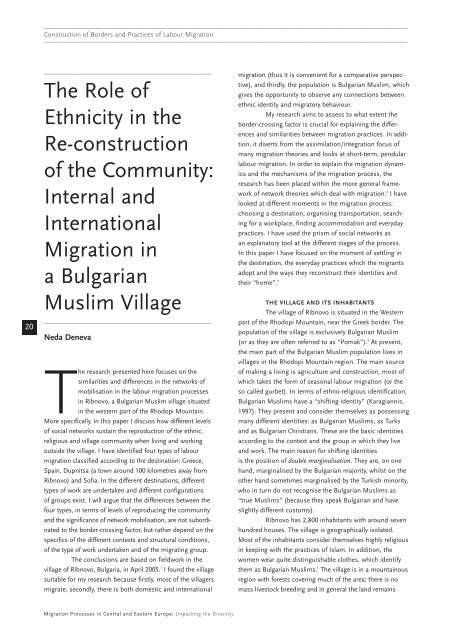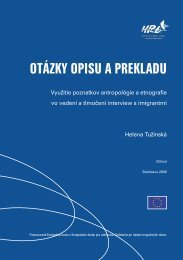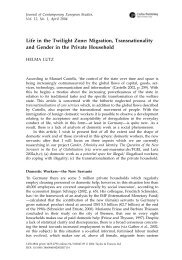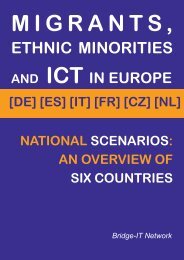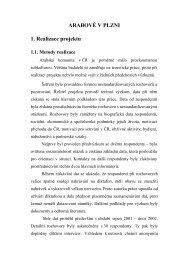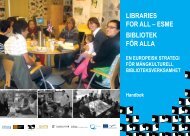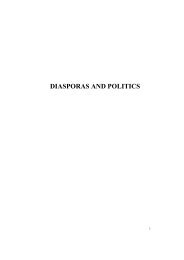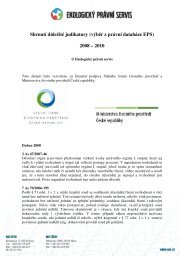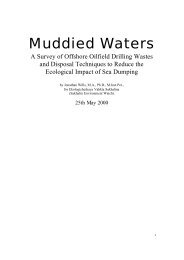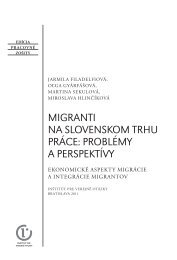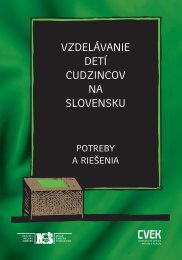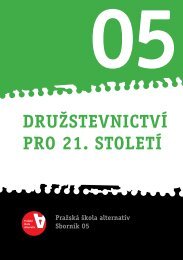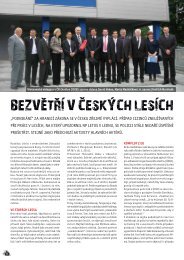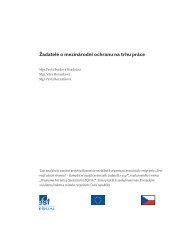Migration Processes in Central and Eastern Europe - Multiple Choices
Migration Processes in Central and Eastern Europe - Multiple Choices
Migration Processes in Central and Eastern Europe - Multiple Choices
Create successful ePaper yourself
Turn your PDF publications into a flip-book with our unique Google optimized e-Paper software.
———————————————————————————————————————————————————————————————<br />
Construction of Borders <strong>and</strong> Practices of Labour <strong>Migration</strong><br />
———————————————————————————————————————————————————————————————<br />
20<br />
—————————————————————————————<br />
The Role of<br />
Ethnicity <strong>in</strong> the<br />
Re-construction<br />
of the Community:<br />
Internal <strong>and</strong><br />
International<br />
<strong>Migration</strong> <strong>in</strong><br />
a Bulgarian<br />
Muslim Village<br />
—————————————————————————————<br />
Neda Deneva<br />
The research presented here focuses on the<br />
similarities <strong>and</strong> differences <strong>in</strong> the networks of<br />
mobilisation <strong>in</strong> the labour migration processes<br />
<strong>in</strong> Ribnovo, a Bulgarian Muslim village situated<br />
<strong>in</strong> the western part of the Rhodopi Mounta<strong>in</strong>.<br />
More specifically, <strong>in</strong> this paper I discuss how different levels<br />
of social networks susta<strong>in</strong> the reproduction of the ethnic,<br />
religious <strong>and</strong> village community when liv<strong>in</strong>g <strong>and</strong> work<strong>in</strong>g<br />
outside the village. I have identified four types of labour<br />
migration classified accord<strong>in</strong>g to the dest<strong>in</strong>ation: Greece,<br />
Spa<strong>in</strong>, Dupnitsa (a town around 100 kilometres away from<br />
Ribnovo) <strong>and</strong> Sofia. In the different dest<strong>in</strong>ations, different<br />
types of work are undertaken <strong>and</strong> different configurations<br />
of groups exist. I will argue that the differences between the<br />
four types, <strong>in</strong> terms of levels of reproduc<strong>in</strong>g the community<br />
<strong>and</strong> the significance of network mobilisation, are not subord<strong>in</strong>ated<br />
to the border-cross<strong>in</strong>g factor, but rather depend on the<br />
specifics of the different contexts <strong>and</strong> structural conditions,<br />
of the type of work undertaken <strong>and</strong> of the migrat<strong>in</strong>g group.<br />
The conclusions are based on fieldwork <strong>in</strong> the<br />
village of Ribnovo, Bulgaria, <strong>in</strong> April 2005. 1 I found the village<br />
suitable for my research because firstly, most of the villagers<br />
migrate, secondly, there is both domestic <strong>and</strong> <strong>in</strong>ternational<br />
migration (thus it is convenient for a comparative perspective),<br />
<strong>and</strong> thirdly, the population is Bulgarian Muslim, which<br />
gives the opportunity to observe any connections between<br />
ethnic identity <strong>and</strong> migratory behaviour.<br />
My research aims to assess to what extent the<br />
border-cross<strong>in</strong>g factor is crucial for expla<strong>in</strong><strong>in</strong>g the differences<br />
<strong>and</strong> similarities between migration practices. In addition,<br />
it diverts from the assimilation/<strong>in</strong>tegration focus of<br />
many migration theories <strong>and</strong> looks at short-term, pendular<br />
labour migration. In order to expla<strong>in</strong> the migration dynamics<br />
<strong>and</strong> the mechanisms of the migration process, the<br />
research has been placed with<strong>in</strong> the more general framework<br />
of network theories which deal with migration. 2 I have<br />
looked at different moments <strong>in</strong> the migration process:<br />
choos<strong>in</strong>g a dest<strong>in</strong>ation, organis<strong>in</strong>g transportation, search<strong>in</strong>g<br />
for a workplace, f<strong>in</strong>d<strong>in</strong>g accommodation <strong>and</strong> everyday<br />
practices. I have used the prism of social networks as<br />
an explanatory tool at the different stages of the process.<br />
In this paper I have focused on the moment of settl<strong>in</strong>g <strong>in</strong><br />
the dest<strong>in</strong>ation, the everyday practices which the migrants<br />
adopt <strong>and</strong> the ways they reconstruct their identities <strong>and</strong><br />
their “home”. 3<br />
THE VILLAGE AND ITS INHABITANTS<br />
The village of Ribnovo is situated <strong>in</strong> the Western<br />
part of the Rhodopi Mounta<strong>in</strong>, near the Greek border. The<br />
population of the village is exclusively Bulgarian Muslim<br />
(or as they are often referred to as “Pomak”). 4 At present,<br />
the ma<strong>in</strong> part of the Bulgarian Muslim population lives <strong>in</strong><br />
villages <strong>in</strong> the Rhodopi Mounta<strong>in</strong> region. The ma<strong>in</strong> source<br />
of mak<strong>in</strong>g a liv<strong>in</strong>g is agriculture <strong>and</strong> construction, most of<br />
which takes the form of seasonal labour migration (or the<br />
so called gurbet). In terms of ethno-religious identification,<br />
Bulgarian Muslims have a “shift<strong>in</strong>g identity” (Karagiannis,<br />
1997). They present <strong>and</strong> consider themselves as possess<strong>in</strong>g<br />
many different identities: as Bulgarian Muslims, as Turks<br />
<strong>and</strong> as Bulgarian Christians. These are the basic identities<br />
accord<strong>in</strong>g to the context <strong>and</strong> the group <strong>in</strong> which they live<br />
<strong>and</strong> work. The ma<strong>in</strong> reason for shift<strong>in</strong>g identities<br />
is the position of double marg<strong>in</strong>alisation. They are, on one<br />
h<strong>and</strong>, marg<strong>in</strong>alised by the Bulgarian majority, whilst on the<br />
other h<strong>and</strong> sometimes marg<strong>in</strong>alised by the Turkish m<strong>in</strong>ority,<br />
who <strong>in</strong> turn do not recognise the Bulgarian Muslims as<br />
“true Muslims” (because they speak Bulgarian <strong>and</strong> have<br />
slightly different customs).<br />
Ribnovo has 2,800 <strong>in</strong>habitants with around seven<br />
hundred houses. The village is geographically isolated.<br />
Most of the <strong>in</strong>habitants consider themselves highly religious<br />
<strong>in</strong> keep<strong>in</strong>g with the practices of Islam. In addition, the<br />
women wear quite dist<strong>in</strong>guishable clothes, which identify<br />
them as Bulgarian Muslims. 5 The village is <strong>in</strong> a mounta<strong>in</strong>ous<br />
region with forests cover<strong>in</strong>g much of the area; there is no<br />
mass livestock breed<strong>in</strong>g <strong>and</strong> <strong>in</strong> general the l<strong>and</strong> rema<strong>in</strong>s<br />
<strong>Migration</strong> <strong>Processes</strong> <strong>in</strong> <strong>Central</strong> <strong>and</strong> <strong>Eastern</strong> <strong>Europe</strong>: Unpack<strong>in</strong>g the Diversity


